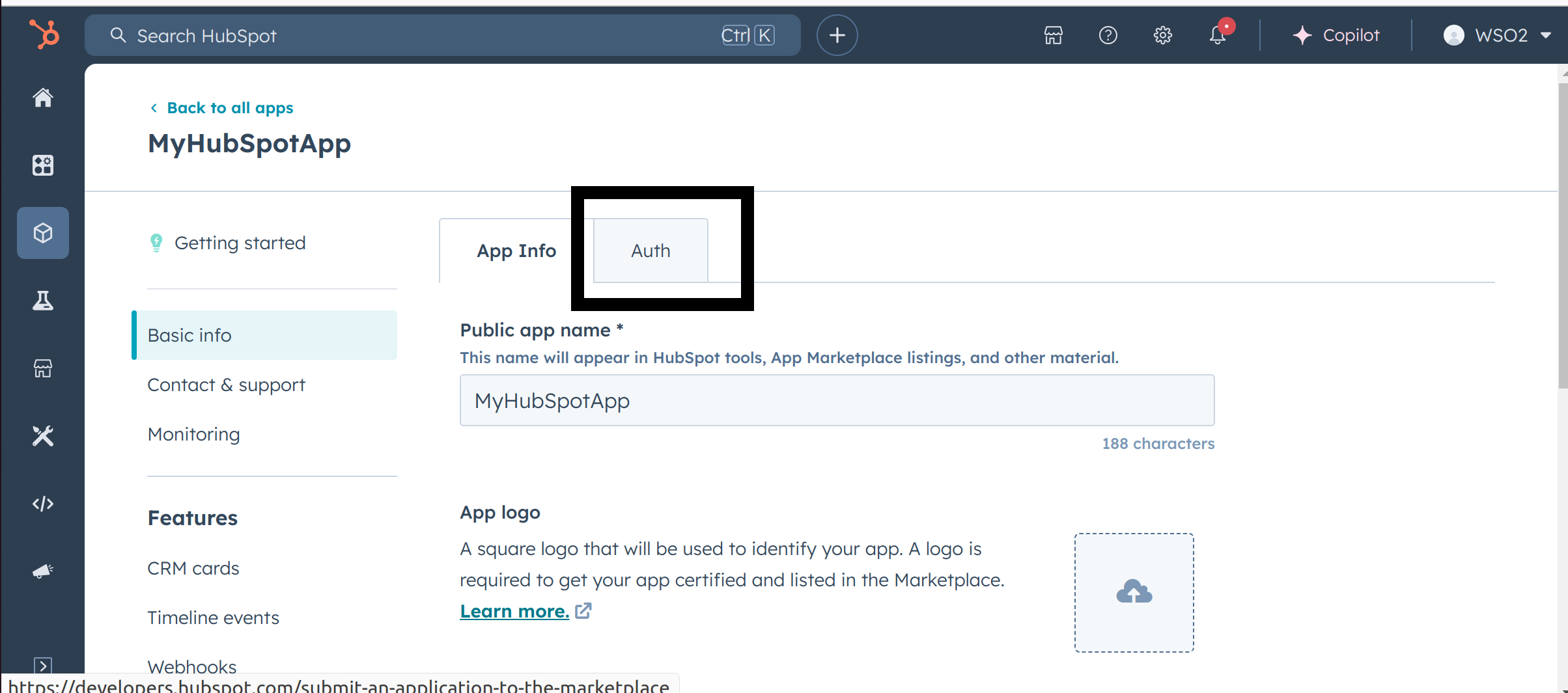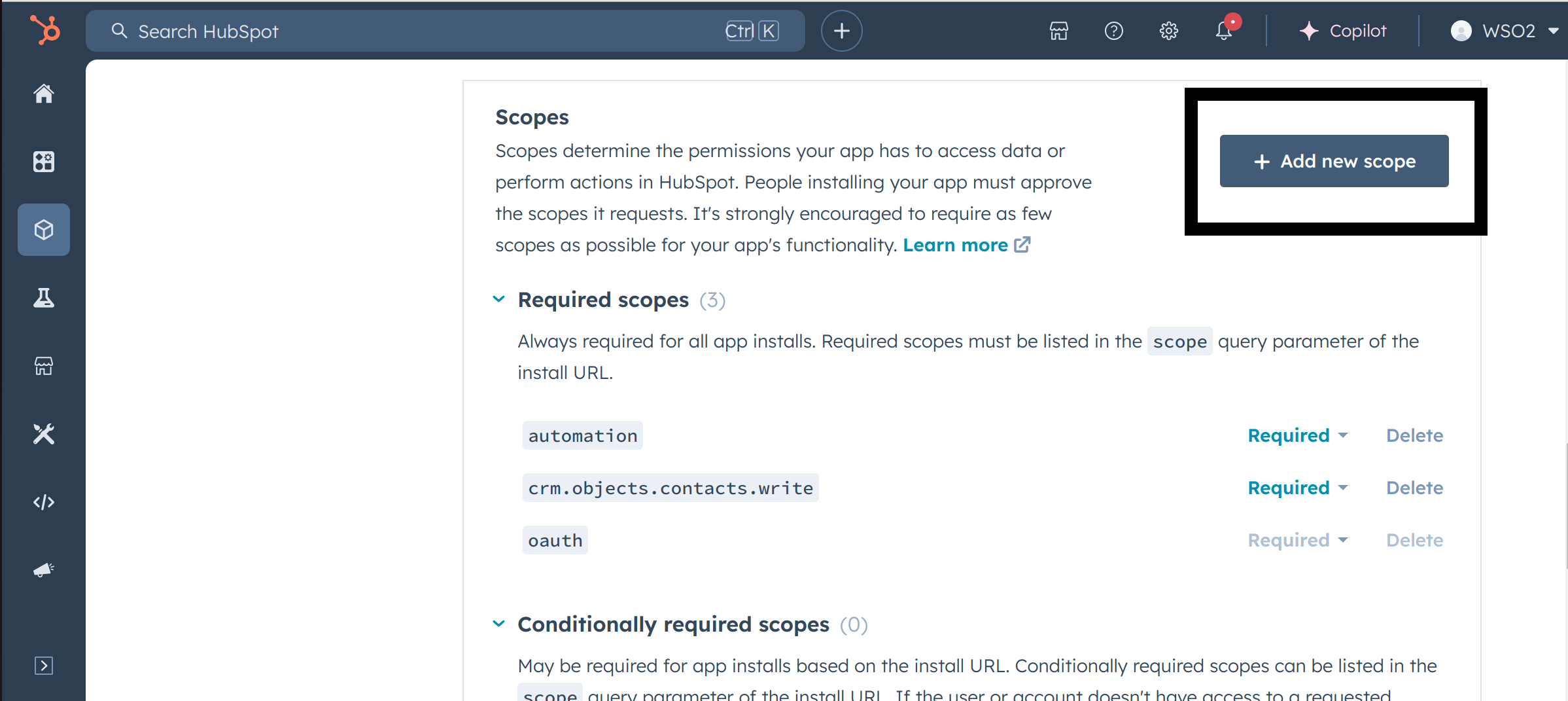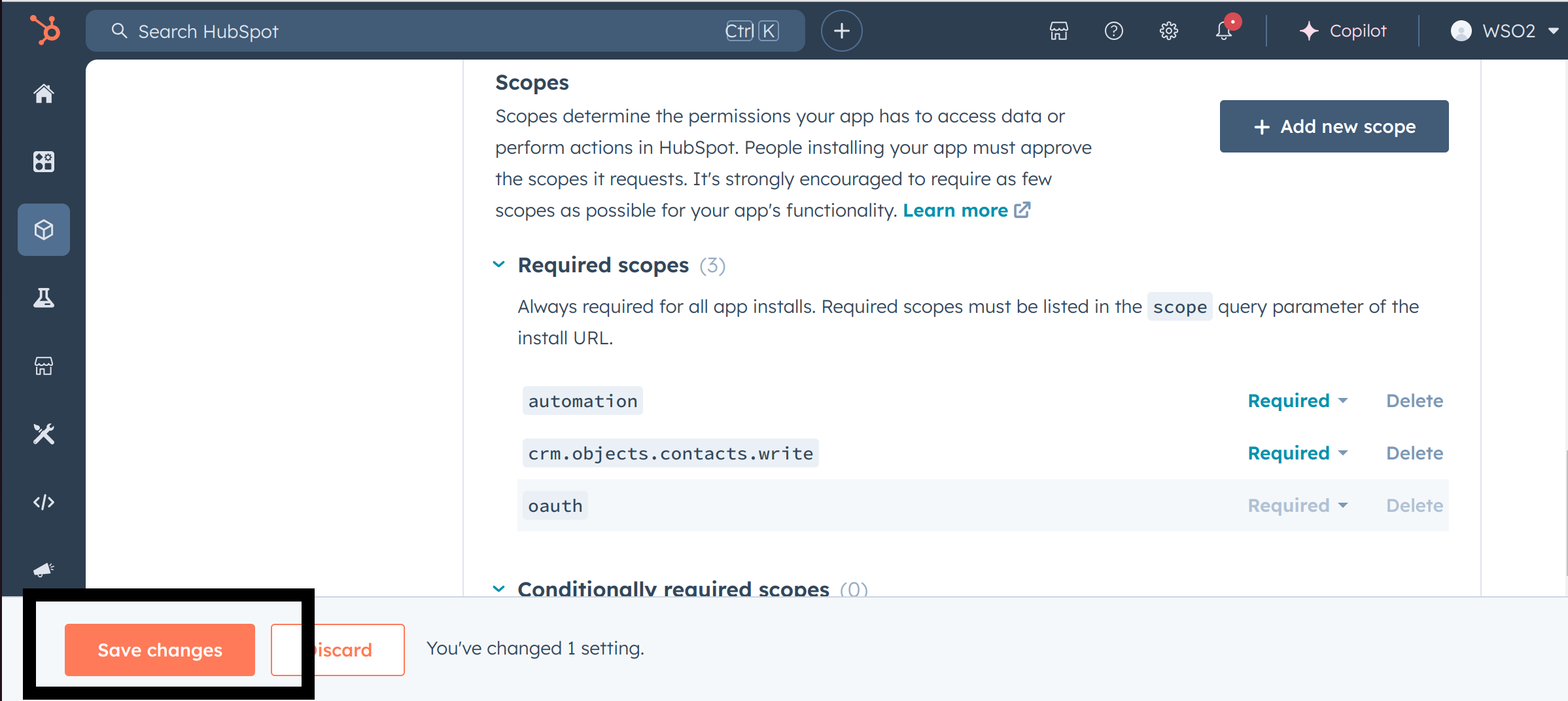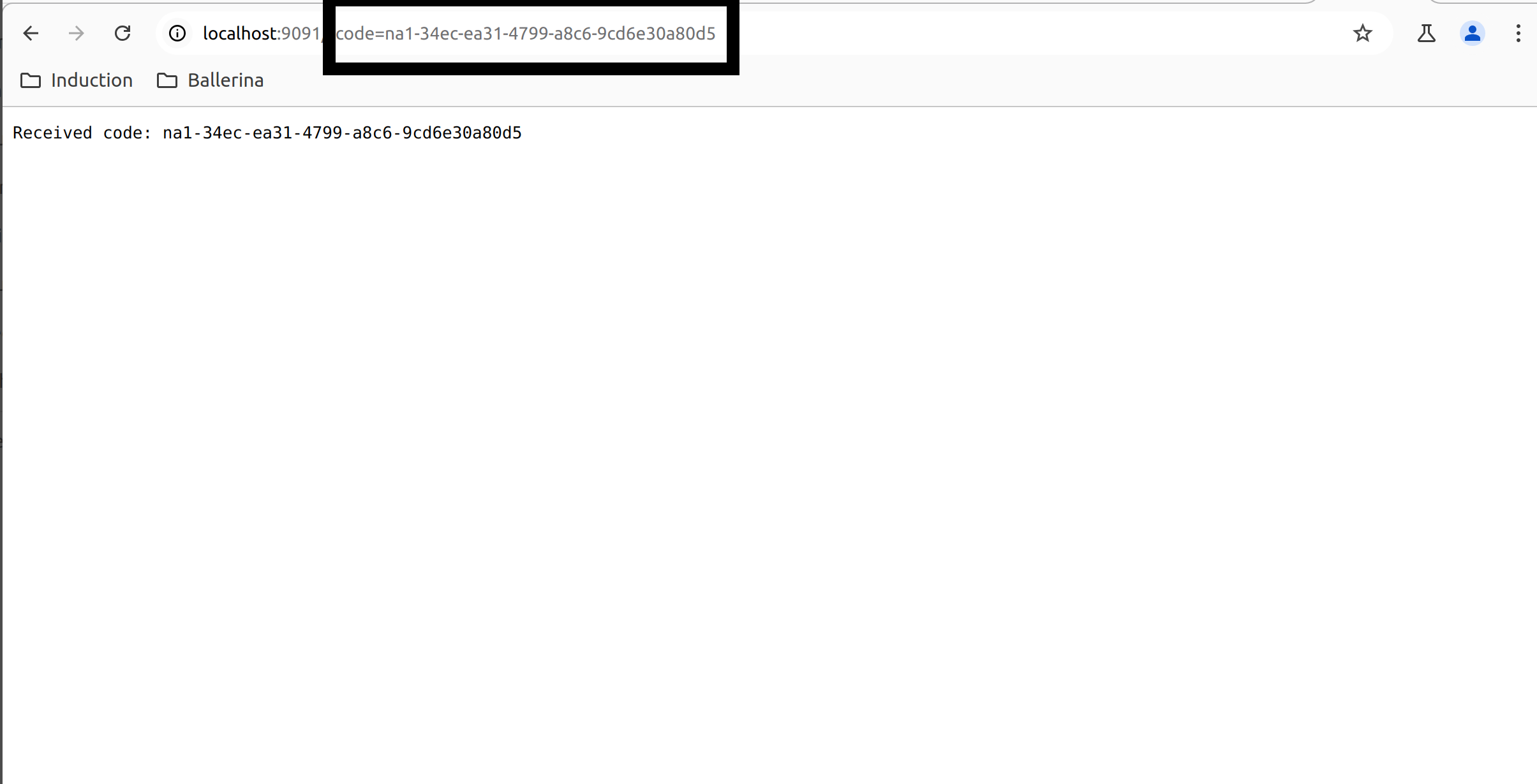Module hubspot.automation.actions

ballerinax/hubspot.automation.actions Ballerina library
Overview
HubSpot is an AI-powered customer relationship management (CRM) platform.
The ballerinax/hubspot.automation.actions offers APIs to connect and interact with the Automation Actions endpoints, specifically based on the HubSpot REST API.
Setup guide
To use the HubSpot Automation action API connector in Ballerina, you must have a HubSpot developer account. If you don't have an account, create one using the following steps.
Step 1: Create a HubSpot Developer Account
Visit the HubSpot portal and create a Developer Account.
Step 2: Create a HubSpot Developer Test Account
Visit developer test account page and create a HubSpot developer test account.
Step 3: Create a HubSpot Public App
In your developer account, navigate to the "Apps" section.
Click on "Create App" and provide the necessary details, including the app name and description.
Step 4: Initiate the OAuth Flow
Move to the Auth tab in the created app and set the permissions there.
Under the OAuth tab you can find the following details,
client_id: Your app's Client ID.redirect_uri: The URL users will be redirected to after granting access.scope: A space-separated list of scopes your app is requesting.

Step 5: Add the redirect URL
Add your redirect url under the redirect urls.

Step 6: Add the Required Scopes
For Automation Actions, the required scopes are;
- 'automation'

Save the app

Step 7: Obtain the authorization code
Copy the App installation url and paste it in the web browser.

It wll prompt you to install the App and then select your developer test account.
After selecting the developer test account, you will receive a authorization code displayed in the browser.

Step 8: Obtain the access token
Place your <authorization_code>, <client_id> and <client_secret> in the following command and execute it in the terminal
'curl --request POST
--url https://api.hubapi.com/oauth/v1/token
--header 'content-type: application/x-www-form-urlencoded'
--data 'grant_type=authorization_code&code=<authorization_code>&redirect_uri=http://localhost:9090&client_id=<client_id>&client_secret=<client_secret>'
In order to receive a token we need to run a listener at the provided redirect uri.
If the command executes successfully , you will receive the access token from the response.
Step 9: Obtaining the developer API key
Follow the instructions at (https://developers.hubspot.com/docs/api/developer-tools-overview#developer-api-keys) to obtain the developer API key.
Quickstart
To begin using the HubSpot Automation API connector in your Ballerina application, you'll need to follow these steps:
Step 1: Import the connector
First, import the ballerinax/hubspot.automation.actions package into your Ballerina project.
import ballerinax/hubspot.automation.actions;
Step 2: Instantiate a new connector
Create a actions:ConnectionConfig object with your domain and developer API token, and initialize the connector.
actions:ConnectionConfig config = { auth: { hapikey: "<developer-api-key>" , private\-app\-legacy: "" } }; final actions:Client hubspotAutomation = check new (config);
Step 3: Invoke the connector operation
Utilize the connector's operations to manage extensions and functions.
Create an extension
actions:FieldTypeDefinition typeDefinition = { referencedObjectType: "OWNER", externalOptions: false, externalOptionsReferenceType: "", name: "optionsInput", 'type: "enumeration", fieldType: "select", optionsUrl: "https://webhook.site/94d09471-6f4c-4a7f-bae2-c9a585dd41e0", options: [] }; actions:InputFieldDefinition inputFieldDefinition = { isRequired: true, automationFieldType: "", typeDefinition: typeDefinition, supportedValueTypes: ["STATIC_VALUE"] }; actions:PublicActionFunction publicActionFunction = { functionSource: "exports.main = (event, callback) => {\r\n callback({\r\n outputFields: {\r\n myOutput: \"example output value\"\r\n }\r\n });\r\n}", functionType: "POST_ACTION_EXECUTION" }; actions:PublicActionDefinitionEgg testingPublicActionDefinitionEgg = { inputFields: [inputFieldDefinition], actionUrl: "https://webhook.site/94d09471-6f4c-4a7f-bae2-c9a585dd41e0", published: false, objectTypes: ["CONTACT"], objectRequestOptions: { properties: ["email"] }, functions: [publicActionFunction], labels: { "en": { "inputFieldLabels": { "staticInput": "Static Input", "objectInput": "Object Property Input", "optionsInput": "External Options Input" }, "actionName": "My Extension", "actionDescription": "My Extension Description", "appDisplayName": "My App Display Name", "actionCardContent": "My Action Card Content" } } }; actions: PublicActionDefinition response = check hubspotAutomation->/[appId].post(testingPublicActionDefinitionEgg);
List definitions
actions : CollectionResponsePublicActionDefinitionForwardPaging response = check hubspotAutomation->/automation/v4/actions/[appId];
Examples
The HubSpot Automation API connector provides practical examples illustrating usage in various scenarios. Explore these examples, covering the following use cases:
- Extension CRUD- Perform CRUD operations on Extensions
- Call complete callback APIs - Complete callbacks using the HubSpot API
Import
import ballerinax/hubspot.automation.actions;Other versions
1.0.0